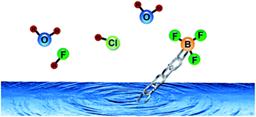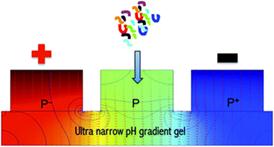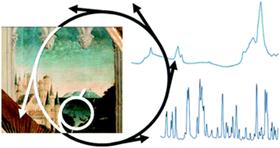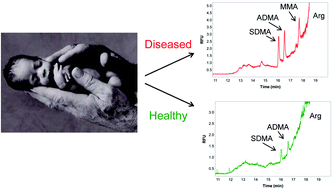Take a look at our new hot articles just published in Analytical Methods. These papers are all free to read for the next few weeks. Enjoy the reading!
Determination of boron in silicon without use of additional complexing agents
Matthias Balski, Franziska Emmerling, Heinrich Kipphardt and Ulrich Panne
Anal. Methods, 2014, Advance Article
DOI: 10.1039/C4AY00410H, Paper
Rapid and quantitative analysis of pesticides in fruits by QuEChERS pretreatment and low-temperature plasma desorption/ionization orbitrap mass spectrometry
Anastasia Albert, Andrea Kramer, Simon Scheeren and Carsten Engelhard
Anal. Methods, 2014, Advance Article
DOI: 10.1039/C4AY00103F, Paper
Time-gated fluorescence sensor for silver ions using Mn:CdS/ZnS quantum dots/DNA/gold nanoparticle complexes
Xiaoyan Leng, Dawei Huang, Chenggang Niu, Xiaoyu Wang, Guangming Zeng and Qiuya Niu
Anal. Methods, 2014, Advance Article
DOI: 10.1039/C3AY42129E, Paper
Rapid measurement of total polyphenols content in cocoa beans by data fusion of NIR spectroscopy and electronic tongue
Xingyi Huang, Ernest Teye, Livingstone K. Sam-Amoah, Fangkai Han, Liya Yao and William Tchabo
Anal. Methods, 2014, Advance Article
DOI: 10.1039/C4AY00223G, Paper
Protein/peptide purification by three-well OFFGEL electrophoresis with immobilized ultra narrow pH gradient gels
Elena Tobolkina, Fernando Cortés-Salazar, Liang Qiao and Hubert H. Girault
Anal. Methods, 2014, Advance Article
DOI: 10.1039/C4AY00088A, Paper
A formaldehyde trace gas sensor based on a thermoelectrically cooled CW-DFB quantum cascade laser
Jingsong Li, Uwe Parchatka and Horst Fischer
Anal. Methods, 2014, Advance Article
DOI: 10.1039/C3AY41964A, Paper
New insights on blue pigments used in 15th century paintings by synchrotron radiation-based micro-FTIR and XRD
Nati Salvadó, Salvador Butí, Miguel A. G. Aranda and Trinitat Pradell
Anal. Methods, 2014,6, 3610-3621
DOI: 10.1039/C4AY00424H, Paper
Real-time detection of chemical warfare agent simulants in forensic samples using active capillary plasma ionization with benchtop and field-deployable mass spectrometers
Morphy Dumlao, Pablo Martinez-Lozano Sinues, Maryia Nudnova and Renato Zenobi
Anal. Methods, 2014,6, 3604-3609
DOI: 10.1039/C4AY00303A, Paper
Determination of iodinated X-ray contrast agents in pharmaceutical formulations and artificial urine samples by differential pulse voltammetry
Piotr Markowski, Katarzyna Piwowar and Irena Baranowska
Anal. Methods, 2014, Advance Article
DOI: 10.1039/C4AY00538D, Paper
Amplified fluorescence sensing of miRNA by combination of graphene oxide with duplex-specific nuclease
Shuang Guo, Fan Yang, Yulin Zhang, Yong Ning, Qunfeng Yao and Guo-Jun Zhang
Anal. Methods, 2014,6, 3598-3603
DOI: 10.1039/C4AY00345D, Paper
Which spectroscopic technique allows the best differentiation of coffee varieties: comparing principal component analysis using data derived from CD-, NMR- and IR-spectroscopies and LC-MS in the analysis of the chlorogenic acid fraction in green coffee beans
Sagar Deshpande, Rasha M. El-Abassy, Rakesh Jaiswal, Pinkie Eravuchira, Bernd von der Kammer, Arnulf Materny and Nikolai Kuhnert
Anal. Methods, 2014,6, 3268-3276
DOI: 10.1039/C3AY41970C, Paper












